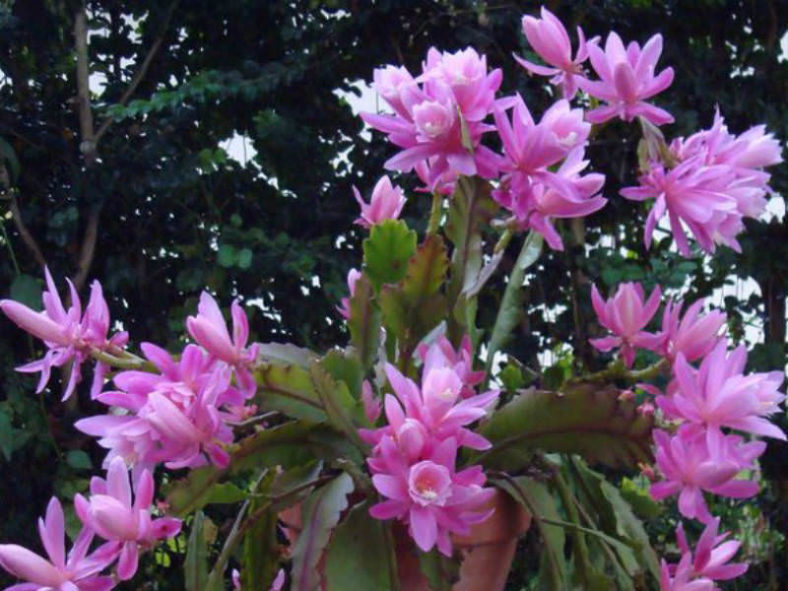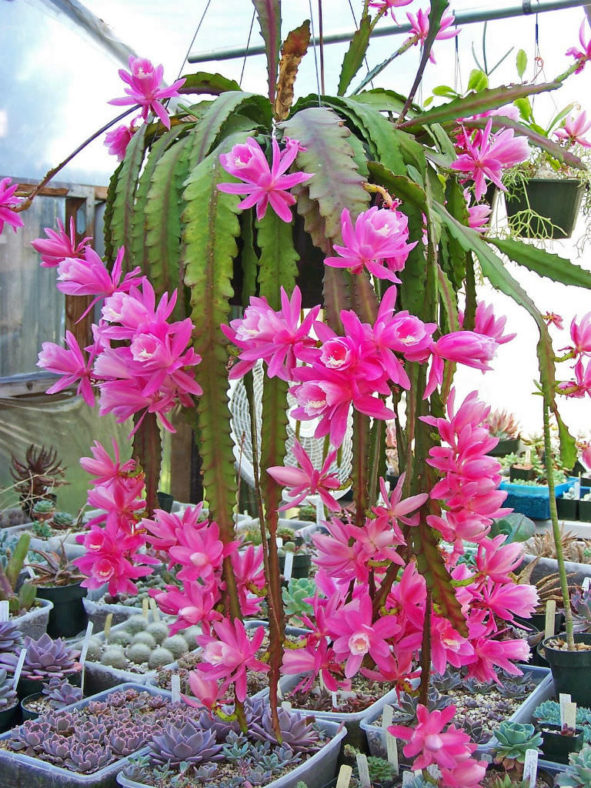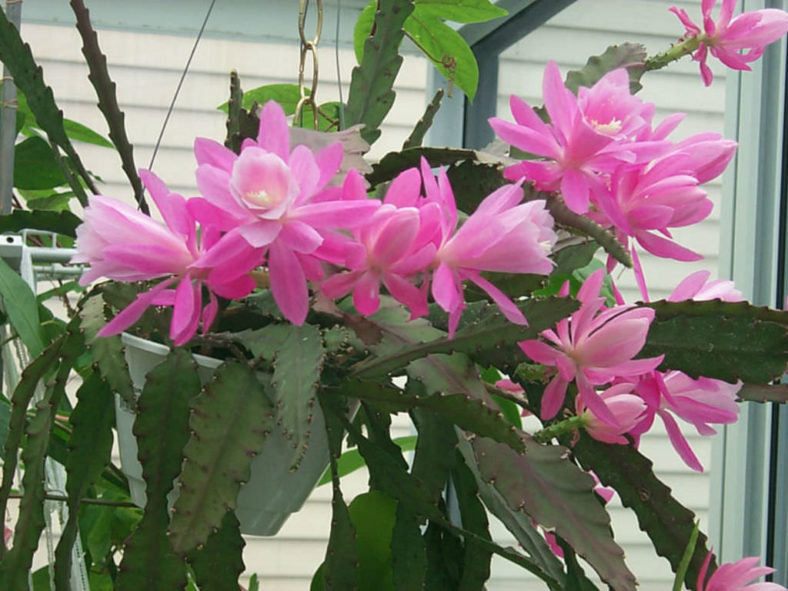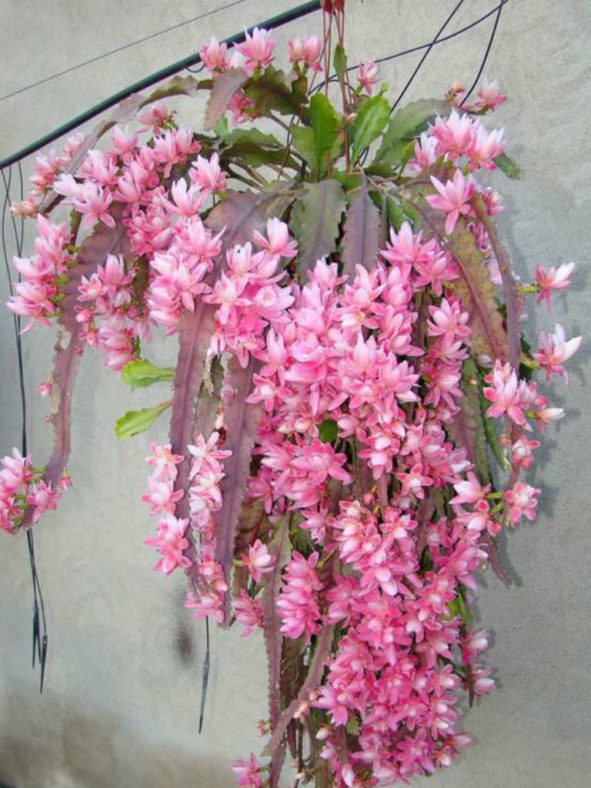Scientific Name
Disocactus phyllanthoides (DC.) Barthlott
Common Name(s)
German Empress, Giant Empress, Pond Lily Cactus
Synonym(s)
Cactus phyllanthoides, Cereus phyllanthoides, Epiphyllum phyllanthoides, Nopalxochia phyllanthoides, Phyllocactus phyllanthoides
Scientific Classification
Family: Cactaceae
Subfamily: Cactoideae
Tribe: Hylocereeae
Genus: Disocactus
Etymology
The specific epithet "phyllanthoides" (pronounced "fil-lan-THOY-deez") means "resembling Phyllanthus" and refers to the likeness of this species to the members of the genus Phyllanthus.
Origin
Disocactus phyllanthoides is native to Mexico. It grows as an epiphyte in the cloud forest in Puebla and Veracruz at elevations ranging from 4,920 to 6,070 feet (1,500 to 1,850 m).
Description
Disocactus phyllanthoides is a freely branching cactus with green or reddish stems reaching up to 3.3 feet (1 m) in length. The primary stems are woody at the base, flattened at the apex, and can grow up to 16 inches (40 cm) long and 0.25 inches (0.6 cm) thick. The secondary stems are flat, lance-shaped, with coarsely scalloped margins, measuring up to 12 inches (30 cm) in length and 2 inches (5 cm) in width.
The pink, funnel-shaped flowers can reach a length of 4 inches (10 cm) and a diameter of 3.5 inches (9 cm). The ellipsoid fruits slowly ripen from green to red and can grow up to 1.6 inches (4 cm) long.
Hybrids

Hardiness
USDA hardiness zones 9a to 11b: from 20°F (-6.7°C) to 50°F (10°C).
How to Grow and Care
Many of the cultivated plants known as Epiphyllum hybrids are derived from crosses between species of Disocactus (rather than Epiphyllum) and other genera in the Hylocereeae.
Disocactus should be grown in fertile but still well-draining soil. They should be watered regularly and fertilized as well, which is essential for good growth and flowering. During the growing period, the plants need frequent watering. The watering should be rather abundant so that the soil becomes completely soaked, but let it dry between waterings. Keep relatively dry in winter or when night temperatures remain below 50°F (10°C).
These cacti dislike extreme heat and cold, so they are best grown in greenhouses during the depths of winter and the heat of summer in hot, dry climates. They also prefer shade to sun and a little extra humidity in the air.
Disocactus can be reproduced both by seeds and cuttings.
Learn more at How to Grow and Care for Disocactus.
Links
- Back to genus Disocactus
- Succupedia: Browse succulents by Scientific Name, Common Name, Genus, Family, USDA Hardiness Zone, Origin, or cacti by Genus
Photo Gallery
Click on a photo to see a larger version.


